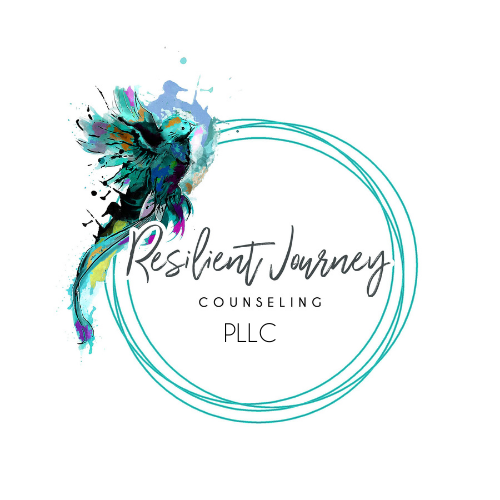EMDR – Eye Movement Desensitization and Reprocessing Therapy

Who Benefits Most from Eye Movement Desensitization Reprocessing (EMDR) Therapy?
Eye Movement Desensitization Reprocessing (EMDR) Therapy is best for those who are struggling with recurring memories from past negative experiences. EMDR Therapy helps you talk to someone about your experiences without judgment and achieve a reduction in some of the feelings that are bothering you.
You will benefit from EMDR Therapy if:
- You are ready for change and want relief from the trauma.
- You are open to addressing the painful experiences.
- You are done with feeling like the trauma overtakes your life.
- You are willing to heal and process the trauma.
- You are tired of feeling sad, angry, nervous and powerless.
There are times you might not be ready for EMDR Therapy:
- You are currently suicidal
- You are struggling with psychosis or hallucinations.
- You have an active eating disorder
- If you are currently experiencing any of these issues, I am able to provide you with appropriate referrals. If it is an emergency, please call 911.
When You Seek EMDR Therapy with Resilient Journey Counseling
The Eye Movement Desensitization Reprocessing (EMDR) Therapy Process
EMDR Therapy is intended to help you facilitate healing and understanding so you can move on past your pain to feel peace and clarity in your life. Together you and I will work to reduce the negative feelings and beliefs associated with the trauma. We will meet together at least weekly for 50 minutes or more depending on your situation so and you can have the freedom and overall harmony you desire.
Some of my clients want immediate relief and we can meet more than once a week to achieve this.
Here’s what to expect:
Initial Questions
If you are insured with Aetna or Optum, please make sure to contact Alma first to verify benefits and copays/deductibles. For more information, contact Alma here(support@helloalma.com) or visit this page for more information: https://alma-help.zendesk.com/hc/en-us/articles/1260801954449-Insurances-Partnered-with-Alma-
**If you don’t want to use insurance or are not insured with Aetna or Optum, please follow the directions below:
Here’s a checklist to walk you through scheduling an appointment
- Go to https://sonia-trefflich.clientsecure.me/, and you can create an account fill in all the information required, and choose an open appointment time that works for you.
- There’s an intake packet to complete. After you set your appointment, you will also get a link to the portal to complete all the online paperwork. Please fill out at least 24-48 hours before so I can have time to review it.
- You will get a link to our first appointment online as well.
- Other information-My physical office address is 3890 West Ann Road UNIT 100, North Las Vegas NV 89031 (By appointment only)
Please message us by emailing us at hello@aresilientjourney.com or by filling out this form, and we will answer any other questions you might have.
Intake: Our first session together will be a full hour and will allow us to get to know each other more. I will ask questions about your past medical and family history and gather details about what brings you to therapy. By the end of this session, we have an overview of where we are headed in our therapy together.
Weekly Sessions: As we meet together for our regular sessions we will start to identify your goals and match them with the therapy approach that is going to suit you best. We will examine your culture and how your upbringing has impacted various parts of your life. We look at the ways your experiences have shaped your beliefs, thoughts, and behaviors so we can explore if they serve you.
EMDR consists of eight phases which begins with assessment and concludes until you have reported no pain or disturbance related to the event or issue.
Phase 1: History and Treatment Planning
Phase 2: Preparation
Phase 3: Assessment
Phase 4: Desensitization
Phase 5: Installation
Phase 6: Body Scan
Phase 7: Closure
Phase 8: Reevaluation
During EMDR, we will collaborate to challenge and replace the ideas you have about your life with those that are healthier and more satisfying.
Termination: When you have met your goals, we will work together to define when the end of therapy will be and what that will look like for you. Often this means coming to sessions less often until you feel you are ready to stop completely. At the end of our time together, I will give you a customized list of resources to continue your work including books, worksheets, and apps.
More About EMDR
EMDR is an evidenced-based psychotherapy approach that has been widely researched and proven successful for the treatment of trauma. Trauma doesn’t have to be issues that are life threatening like physical abuse, accidents or assault. It can be little “t” traumas that are non-life threating like emotional abuse, bullying, the death of a relationship, a loved one, a pet. EMDR is unique because its basis lies not so much on the traumatic event itself but rather, the focus is on the disturbing emotions and symptoms that result from the event. The treatment includes eight standardized phases the therapist will help explain and guide you through. Your therapist will discuss EMDR therapy and talk to you if the issue you want to work on is appropriate for EMDR therapy.
